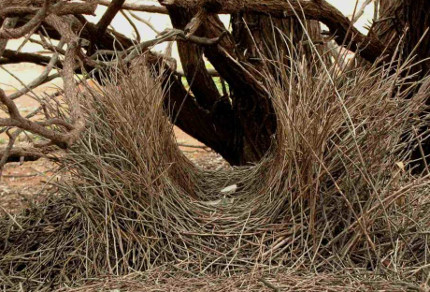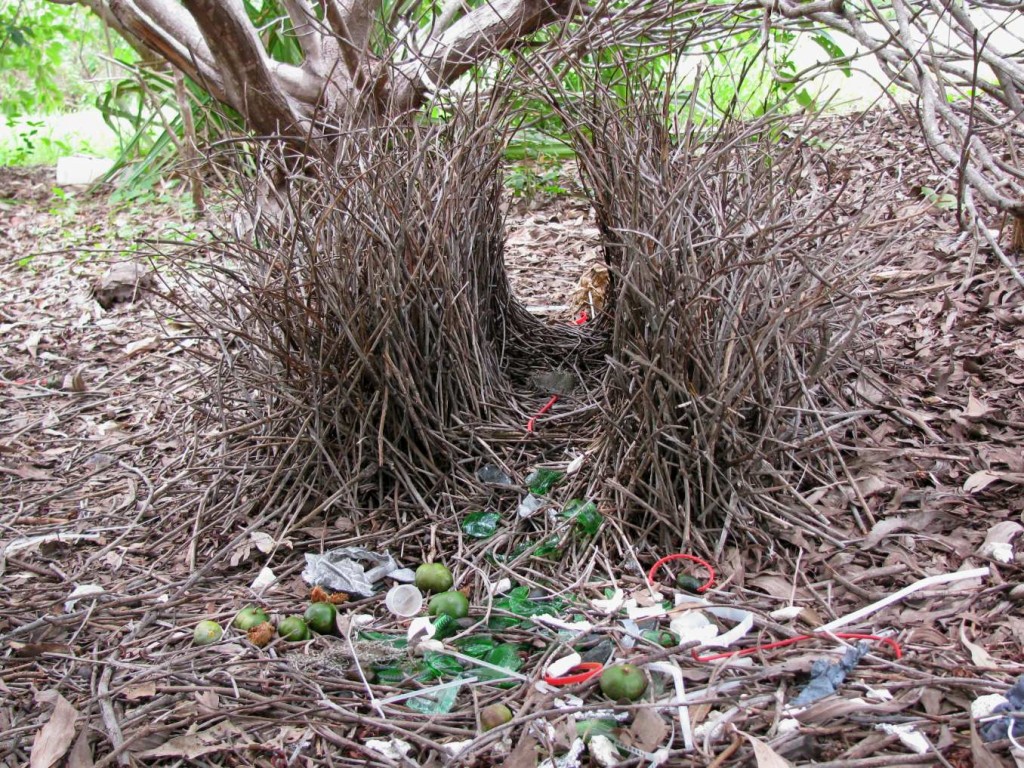
Great Bowerbird Bower (© Magi Nams)
During our year in Australia, Vilis and I observed three species of bowerbirds, the males of which build and decorate courtship bowers and arrange display courts to attract potential mates. In Townsville, where we were based, great bowerbirds squawked and fussed in abundance, providing me opportunities to find a half dozen or more of their bowers tucked under shrubs in plantings along the Ross River Parkway. In the upland rainforests near Paluma, Vilis and I spotted male tooth-billed bowerbirds vocalizing loudly from perches above or near their display courts. And in the Olive Pink Botanical Gardens in the desert at Alice Springs, a male western bowerbird took loud exception to my husband and me eating our lunches near his bower.

Male Western Bowerbird Arranging Decorations at Bower (© Vilis Nams)
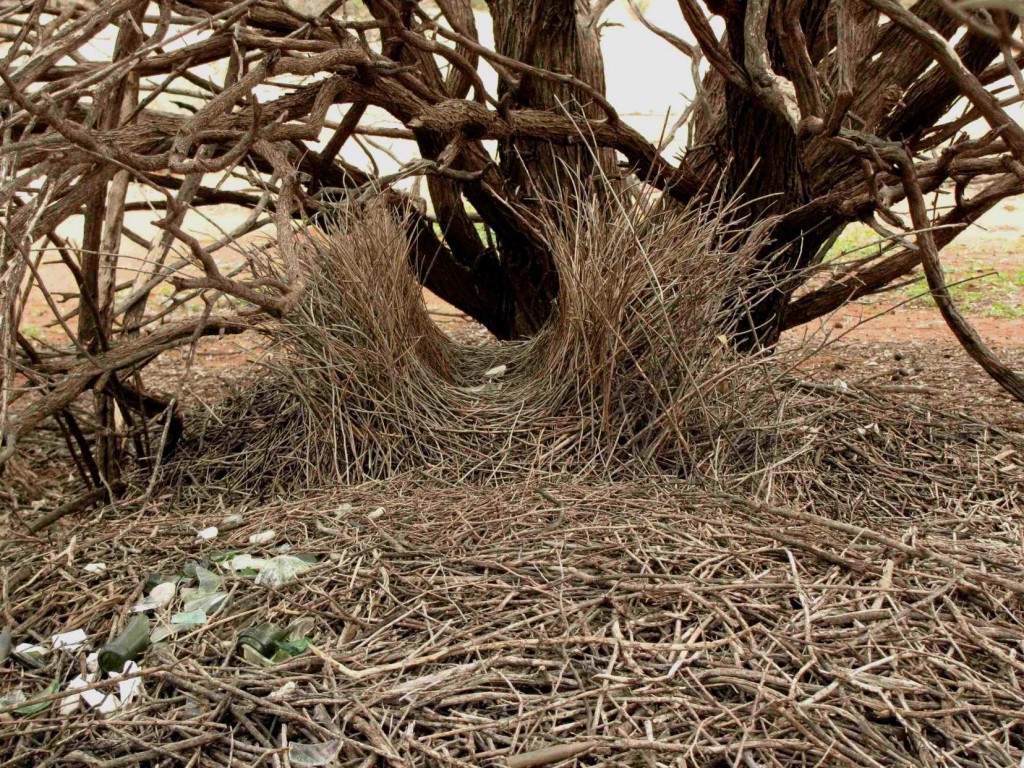
Western Bowerbird Bower (© Vilis Nams)
Male great and western bowerbirds construct avenue bowers, precisely positioning twigs to create two vertical walls with a smooth, curved avenue passing between them. Other Australian bowerbirds I didn’t see during our sabbatical – the regent, spotted, fawn-breasted, and satin bowerbirds – also construct avenue bowers. Male golden bowerbirds build double maypole bowers, with twigs piled high around the base of a pair of saplings. Vilis and I found a damaged maypole bower built by a golden bowerbird in the rainforest neart Paluma, but didn’t see the bird itself. Male tooth-billed bowerbirds don’t construct a bower, but rather clear a patch of rainforest floor to create a display court.
All male bowerbirds decorate their bowers and display courts. The tooth-billed bowerbird clips fresh leaves and places them upside down on his display court. The golden bowerbird places pale lichens and flowers on a display perch between his maypoles.1 Bowerbirds that build avenue bowers lay decorations such as shells, glass, leaves, fruits, stones, bones, feathers, or bits of plastic on their display courts, which are mats of twigs at the mouths of their bowers. Male bowerbirds defend their bowers from other males of the same species intent on stealing decorations. In Townsville, I observed a great bowerbird carrying a stolen treasure from another bower.
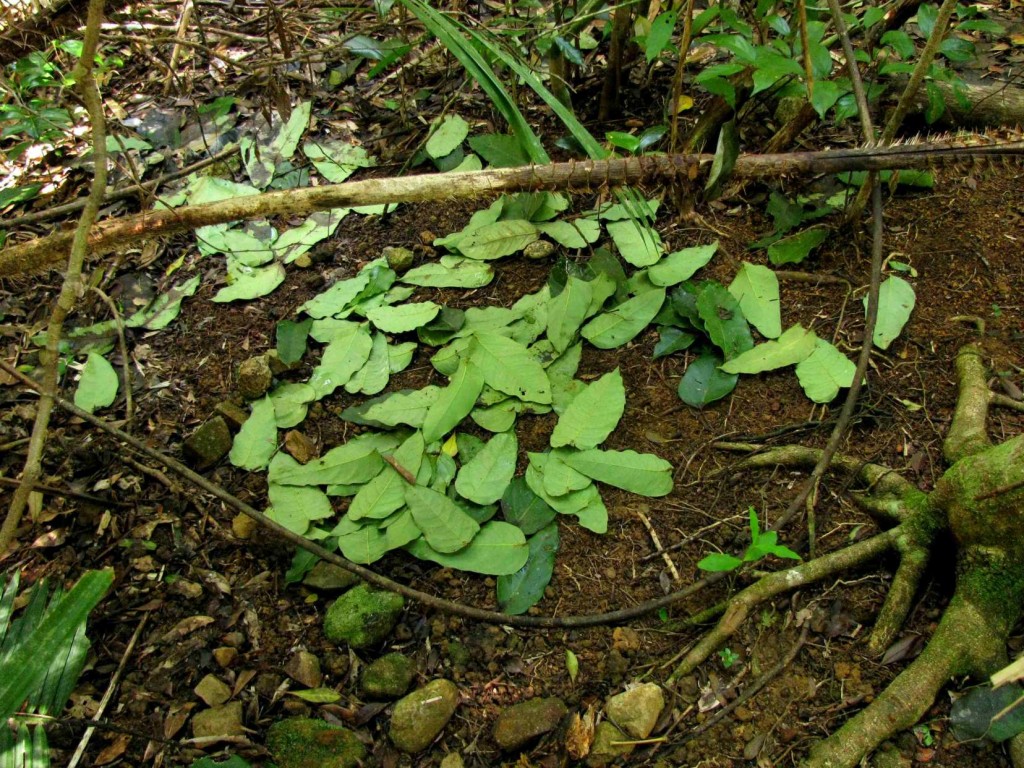
Tooth-billed Bowerbird Display Court (© Vilis Nams)
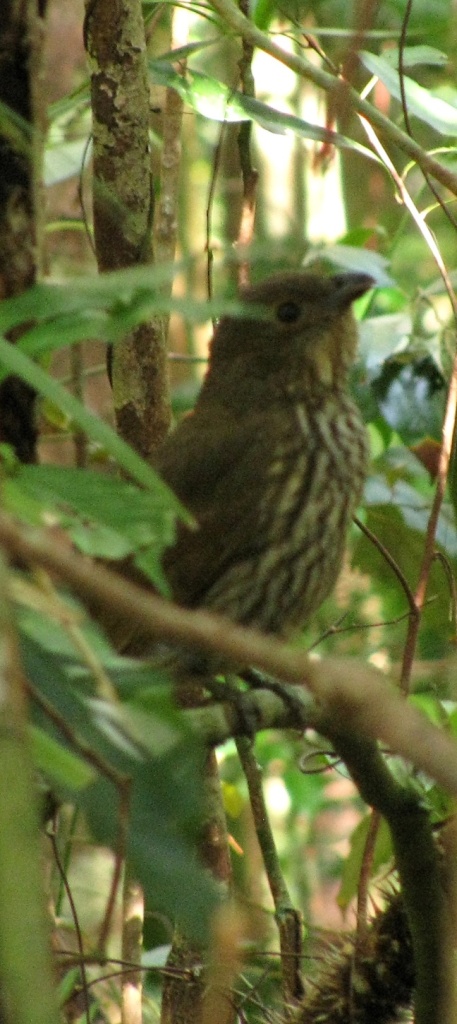
Tooth-biled Bowerbird (© Vilis Nams)
Different bowerbird species have certain preferences for ornament colour. For example, satin bowerbirds decorate their bowers with blue and yellow ornaments,1 while great bowerbirds prefer green, pinky-red, and white-grey ornaments. Great bowerbirds will even paint the interior walls of their avenue bowers by spitting juices from fruits onto them.2 One great bowerbird male I spotted took his artistry to a whole new level by incorporating red and grey toys he’d stolen from neighbourhood children.
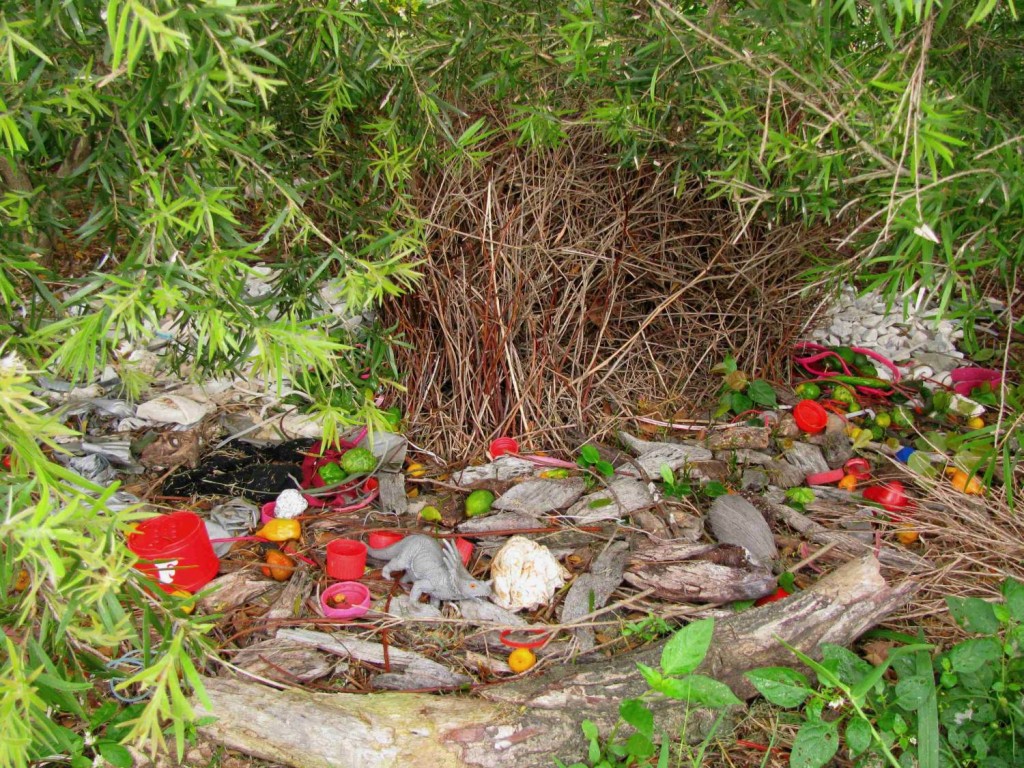
Great Bowerbird Bower with Toys as Decorations (© Magi Nams)
The point of all this construction and decoration is to impress the girls. Female bowerbirds inspect males and their bowers and display courts before choosing mates. In Townsville, I watched a male great bowerbird display on his court when a female came to inspect his handiwork. He raised his magenta-coloured crest and flounced about, presumably in an attempt to make himself, as well as his bower, look impressive and irresistable to the female (although she left without mating). Research has shown that male great bowerbirds arrange ornaments on their display courts in patterns which create a “set stage” that shows off the males and their decorations to their best advantage when viewed by females inside bower avenues.3
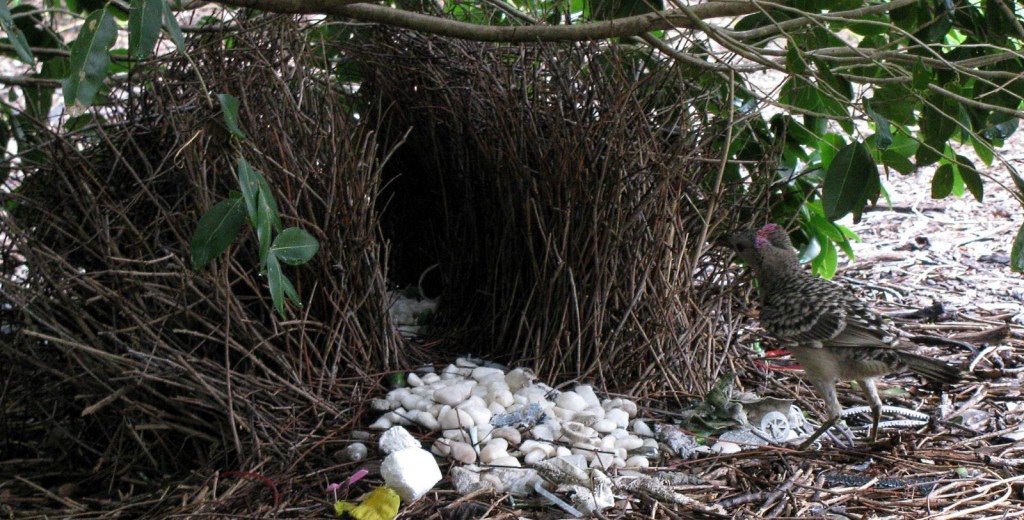
Male Great Bowerbird Displaying Crest at Bower (© Magi Nams)
The precise patterns of ornament placement by bowerbirds is considered an example of avian art.3 In an article published in JCU Discover Magazine, Dr. Simon Robson of James Cook University’s School of Marine and Tropical Biology shed light on this idea. He’s quoted as saying about great bowerbirds, “The section of their brain that deals with visual and conceptual processing is relatively large. It’s quite likely that they possess a wonderful aesthetic or artistic sense of beauty.”4 That artistic sense of beauty is one that’s been copied by human artists inspired by the striking beauty of the bowerbirds’ creations.
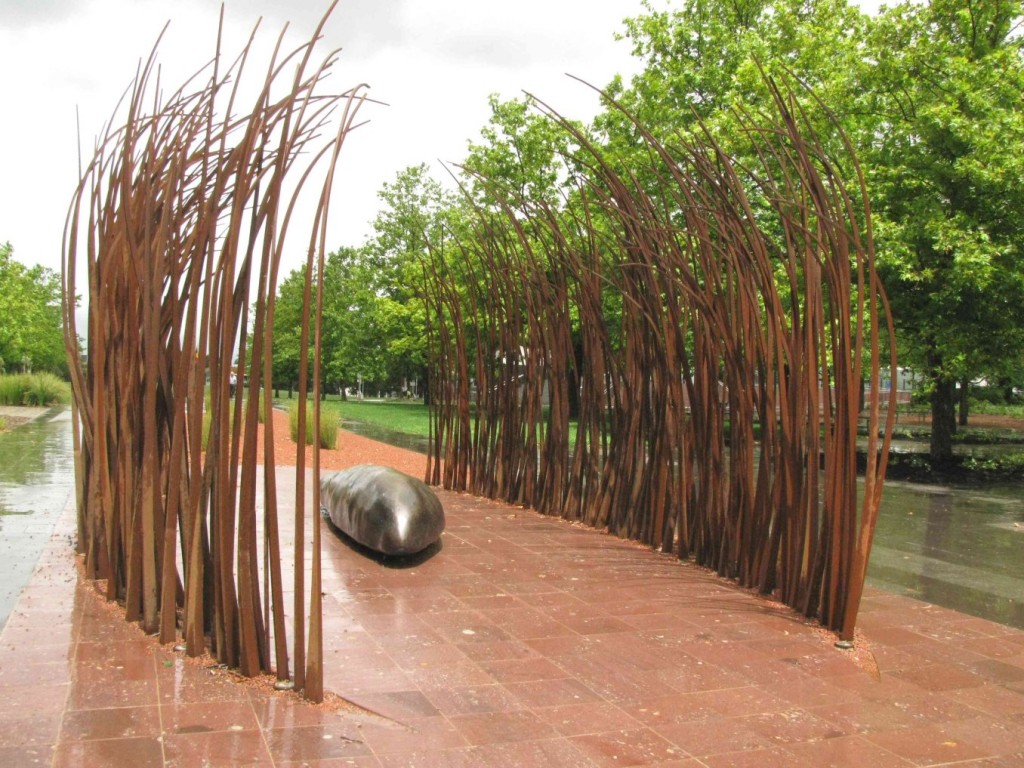
‘Fire and Water’ by Judy Watson, Reconciliation Place, Canberra (© Magi Nams)
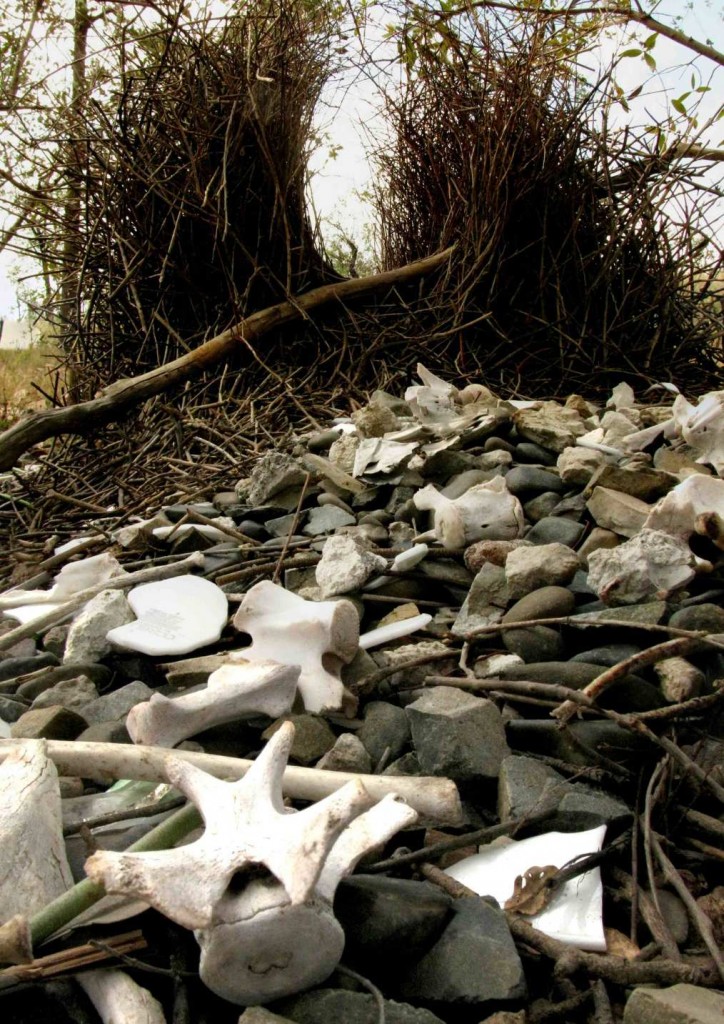
Great Bowerbird Bower (© Vilis Nams)
References:
1. Graham Pizzey and Frank Knight. 2000. The Field Guide to the Birds of Australia. Angus & Robertson, Sydney, pp. 476-480.
2. Chris Johnson, University of Tasmania. Personal communication.
3. ScienceDaily, September 9, 2010. In Attracting Mates, Male Bowerbirds Appear to Rely on Special Optical Effect. Accessed 25-Jan-2012. http://www.sciencedaily.com/releases/2010/09/100909122801.htm
4. James Cook University. The bird collectors. JCU Discover Magazine, July, 2009, pp. 10-11.

